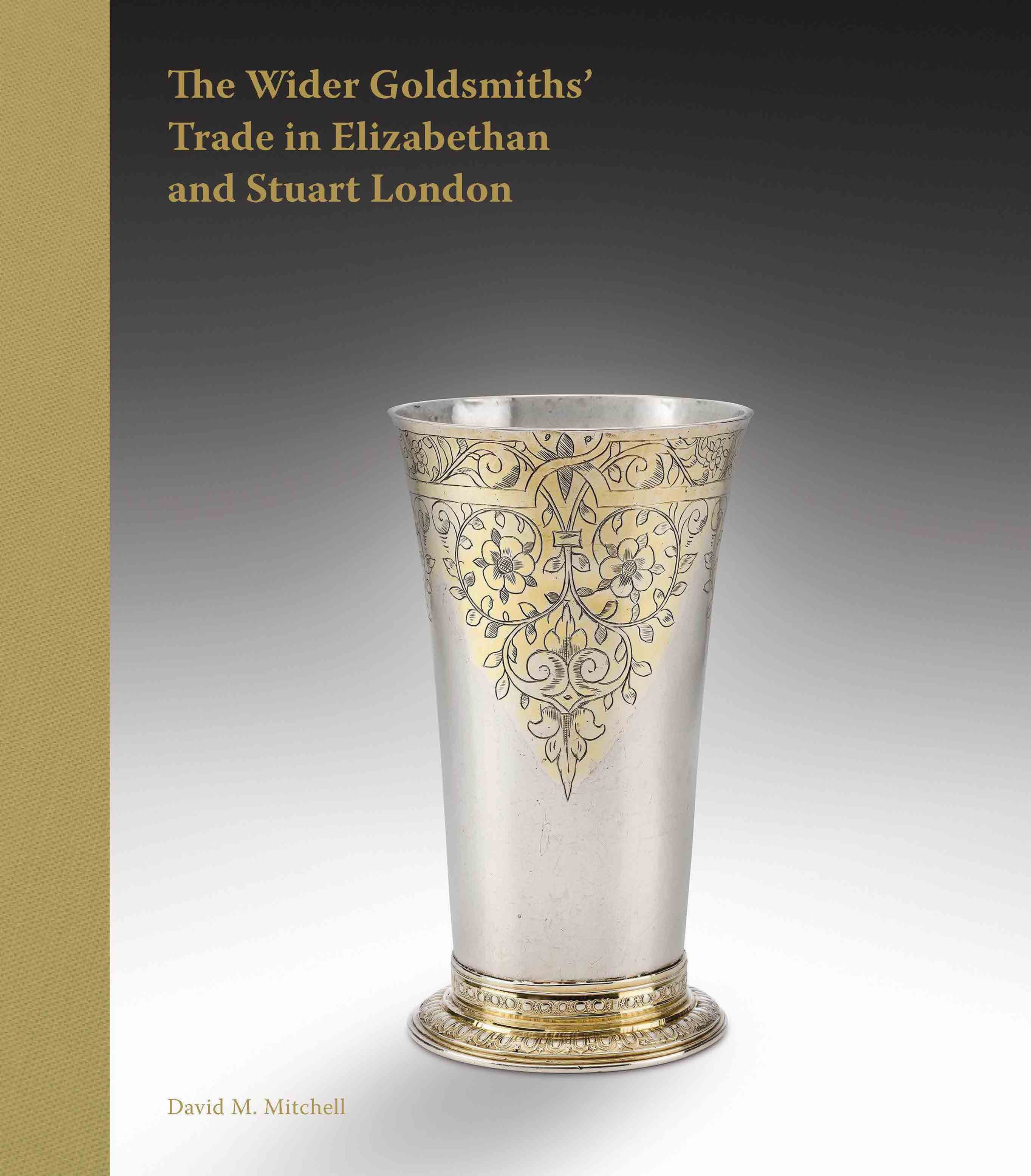The Wider Goldsmiths’ Trade in Elizabethan and Stuart London is the first book to study all aspects of the Goldsmiths’ trade. It challenges the assumption that the manufacture of silver plate and gold jewellery was the trade's only activity during the sixteenth and seventeenth centuries. It considers associated activities such as refining, wiredrawing, and the making of small-swords and watches, as well as the development of the modern banking system.
On Elizabeth I’s accession, England was essentially a ‘third world economy’, with exports mainly of wool, unfinished woolen cloth and some minerals, whilst imports consisted of a great range of goods including luxuries such as silks, fine linens, and even scissors. By the end of the seventeenth century, the situation was transformed: a burgeoning maritime trade with many parts of the world enabled the import of raw materials as well as some luxury goods and a wide range of exports which included certain goods produced in London with an international reputation for quality, such as beaver hats and mathematical instruments. Throughout the period, religious refugees and economic migrants brought their skills and knowledge to England. At the Restoration, Royalists returning to London from the Continent introduced French and Low Country fashions in dress, manners, cuisine and dining practice.
Refining, wiredrawing, and the making of plate, smallwares and jewellery were at the heart of the trade and of concern to the Goldsmiths’ Company that had responsibility for ensuring that the correct alloys were used for silver and gold wares. This was not always the case for clocks, watches and swords. Nevertheless, they are included in this study as several members of the Company were instrumental in the development of clock and watch making in the city. Towards the end of the seventeenth century, the great increase in the sale of watches with gold and silver cases forced the Company to become involved in the control of this trade. Similarly, after the Civil Wars, the wearing of the small-sword by all those with aspirations to gentility gave rise to a demarcation dispute between the Goldsmiths’ and Cutlers’ Companies. Further, during the Commonwealth, goldsmith-bankers developed the clearing system which led to modern retail banking.
This book considers the wider Goldsmiths’ trade against dynamic changes: the organization and control of its branches and the design, manufacture and sale of its wares. The twelve chapters cover a range of topics – from history and context, to the various branches of the trade.
The Wider Goldsmiths' Trade in Elizabethan and Stuart London
By David M. Mitchell
February 2024
Hardback, 280 x 245 mm
440 pages, approx. 280 illustrations
ISBN: 978-1-915401-07-6
About the author
David M. Mitchell’s major interest is the way in which changing social and cultural attitudes affect the material world. He has written widely on the topic, particularly in the fields of textiles and metalwork, notably Silversmiths in Elizabethan London. Their Lives and Their Marks, published in 2017.
In the press
"A book that stands as a model of scrupulous research and that should be required reading for anyone wanting to enrich their understanding of the complexities not only of the 'wider goldsmiths' trade' in seventeen-century London but of the wider economy and society of seventeenth-century London too." —The Burlington Magazine
"An impressive, lavishly illustrated and scholarly work, that is visually and intellectually engaging" —Antiquarian Horology
"This outstanding book transforms our understanding of the goldsmiths’ trade and its role in the making of the modern world ... [Mitchell’s] masterly control of detail and excellent choice of pertinent illustrations enriches his narrative, making it a pleasure to read. Beautifully-written and illustrated, and exceptionally well-produced, this book will be an inspiration for many years to come." —Journal of the Silver Society
"This book is a joy to read. This is not a stylistic or chronological guide to silver and gilt works of art of the period. This book focuses on the craftsmen themselves and how they learnt their craft, worked and traded. The core strength of the work is an in-depth statistical analysis from rare archival sources ... it will be a standard reference work." —Jewellery History Today


